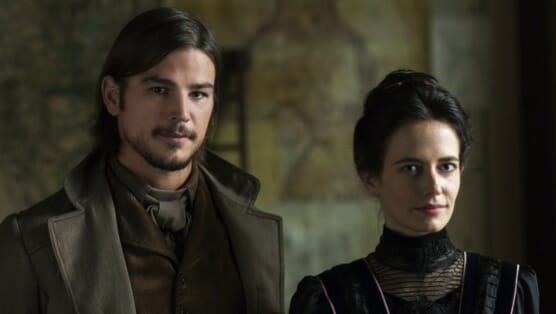Penny Dreadful: “Night Work”
(Episode 1.01)

It’s astounding that a single period in time could produce so many iconic literary characters. Maybe it has something to do with the smoggy streets of Victorian London, or the fear in which people greeted the vast technological changes accompanying the Industrial revolution. Or maybe it was because, for the first time in human history, the majority of the population could read. Whatever the reason, the late nineteenth century produced the likes of Count Dracula, Frankenstein, Dorian Grey, Jack the Ripper (who, although real, populates the pages of literature as strongly as he did the temporal world), Sherlock Holmes, and a horde of other monsters and ghouls.
These monsters—both human and otherwise—are the subject of John Logan’s new series, Penny Dreadful. Set in late nineteenth century England, Logan (who penned both Skyfall and Gladiator) creates a world which is both tone-y and accessible.
I’m not a huge fan of horror. Or rather, I’m very easily scared, which makes me, perhaps, the show’s ideal audience. Regardless, I was apprehensive when I watched the pilot episode. The show opens in a seedy tenement in the middle of the night. An unnamed mother who looks like she’s just walked off the set of Les Mis awakens and slowly gets up to go to the bathroom. It’s a good thing characters in horror movies can’t hear background music or else they’d never do anything. Suffice it to say, if I woke up in the middle of the night with the urge to use the chamber pot, and heard the score from Penny Dreadful, I’d hop back into bed and worry about the sheets in the morning.
But alas, our Fantine-esque mother slowly limps down the hallway of her cramped apartment building and, just as she lights the wooden receptacle in the shared bathroom, she looks out if the window and… I won’t give it away but what comes next isn’t good.
Despite a particularly gory opening sequence, the show goes light on the blood and guts. The costumes and set are sparse as well. Downton Abbey this is not, and I think that’s a good thing. Costume dramas (i.e. The Duchess, Marie Antoinette) have the potential to let the story drop in favor of gowns, wigs and sets. Logan has steered away from this.
After our unnamed mother is made proof of why you should never go to the restroom alone, we cut to a prosperous town house. In a grand, but rather sterile yellow drawing room, Vanessa Ives (Eva Green) kneels huddled in front of a bare wall upon which hangs a single crucifix. Vanessa’s fervent prayer is answered not by the word of God, but by an aggressive spider which crawls out of Jesus’s mouth and throws her into an epileptic fit of reverie. We then cut to a Wild West Show where Ethan Chandler, former Playboy and scion of a fallen family, works as an actor and sharpshooter while sleeping with groupies on the side.
-

-

-

-

-

-

-

-

-

-

-

-

-

-

-

-

-

-

-

-

-

-

-

-

-

-

-

-

-

-

-

-

-

-

-

-

-

-

-

-








































